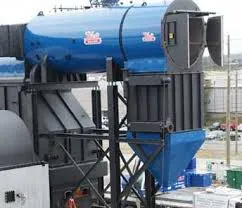- Afrikaans
- Albanian
- Amharic
- Arabic
- Armenian
- Azerbaijani
- Basque
- Belarusian
- Bengali
- Bosnian
- Bulgarian
- Catalan
- Cebuano
- China
- China (Taiwan)
- Corsican
- Croatian
- Czech
- Danish
- Dutch
- English
- Esperanto
- Estonian
- Finnish
- French
- Frisian
- Galician
- Georgian
- German
- Greek
- Gujarati
- Haitian Creole
- hausa
- hawaiian
- Hebrew
- Hindi
- Miao
- Hungarian
- Icelandic
- igbo
- Indonesian
- irish
- Italian
- Japanese
- Javanese
- Kannada
- kazakh
- Khmer
- Rwandese
- Korean
- Kurdish
- Kyrgyz
- Lao
- Latin
- Latvian
- Lithuanian
- Luxembourgish
- Macedonian
- Malgashi
- Malay
- Malayalam
- Maltese
- Maori
- Marathi
- Mongolian
- Myanmar
- Nepali
- Norwegian
- Norwegian
- Occitan
- Pashto
- Persian
- Polish
- Portuguese
- Punjabi
- Romanian
- Russian
- Samoan
- Scottish Gaelic
- Serbian
- Sesotho
- Shona
- Sindhi
- Sinhala
- Slovak
- Slovenian
- Somali
- Spanish
- Sundanese
- Swahili
- Swedish
- Tagalog
- Tajik
- Tamil
- Tatar
- Telugu
- Thai
- Turkish
- Turkmen
- Ukrainian
- Urdu
- Uighur
- Uzbek
- Vietnamese
- Welsh
- Bantu
- Yiddish
- Yoruba
- Zulu
Oct . 04, 2024 01:18 Back to list
making cast iron parts
Making Cast Iron Parts A Comprehensive Overview
Cast iron has been a popular material for manufacturing various parts due to its excellent castability, rigidity, and durability
. The process of making cast iron parts involves several key steps, each contributing to the final quality and performance of the product.First, the production of cast iron begins with selecting the right raw materials. The primary ingredient is iron, which is typically combined with carbon and silicon. The carbon content can vary depending on the desired properties of the final product, usually ranging from 2% to 4%. Additional alloying elements like manganese, sulfur, and phosphorus are also added to enhance specific characteristics.
The melting process is crucial. In modern foundries, induction furnaces are commonly used to melt the prepared charge. The molten iron reaches temperatures around 1400°C (2550°F), enabling it to become fully fluid. Once the iron is molten, it's essential to remove impurities and adjust the composition to meet the specifications for the desired type of cast iron—gray cast iron, ductile iron, or white cast iron.
Next, the molten iron is poured into molds. Molds can be made from sand, metal, or ceramic materials, offering various advantages in terms of surface finish and dimensional accuracy. The choice of mold material often depends on the complexity of the part being produced. Sand casting remains the most widely used method due to its adaptability and cost-effectiveness.
making cast iron parts

After pouring, the cast iron parts are left to cool and solidify. This cooling process can take several hours, during which the iron transitions from a liquid to a solid state. The cooling rate significantly influences the mechanical properties of the cast iron. Slow cooling tends to produce a more ductile material, while rapid cooling can lead to increased hardness but decreased toughness.
Once cooled, the cast iron parts undergo a series of finishing processes, including machining, grinding, and surface treatments. These steps help achieve the precise dimensions and surface qualities required for various applications, ranging from automotive components to industrial machinery.
Finally, quality control is essential to ensure that each part meets industry standards. This may involve non-destructive testing methods to identify any internal defects, followed by a thorough inspection of the finished products.
In summary, the process of making cast iron parts is a complex yet rewarding endeavor that combines material science with engineering. The resulting products exhibit robust characteristics, making cast iron an enduring choice in various industries.
-
8mm Thin-Walled Cast Steel Manhole Cover Pallet Bottom Ring | Durable
NewsAug.04,2025
-
Premium Cast Iron Water Main Pipe: Durable, Corrosion-Resistant
NewsAug.03,2025
-
Durable Cast Iron Water Mains | AI-Optimized Systems
NewsAug.02,2025
-
High-Efficiency Propane Boiler for Baseboard Heat | Save Energy
NewsAug.01,2025
-
Premium Source Suppliers for Various Gray Iron Castings
NewsJul.31,2025
-
Durable Cast Iron Water Main Pipes | Long-Lasting
NewsJul.31,2025


